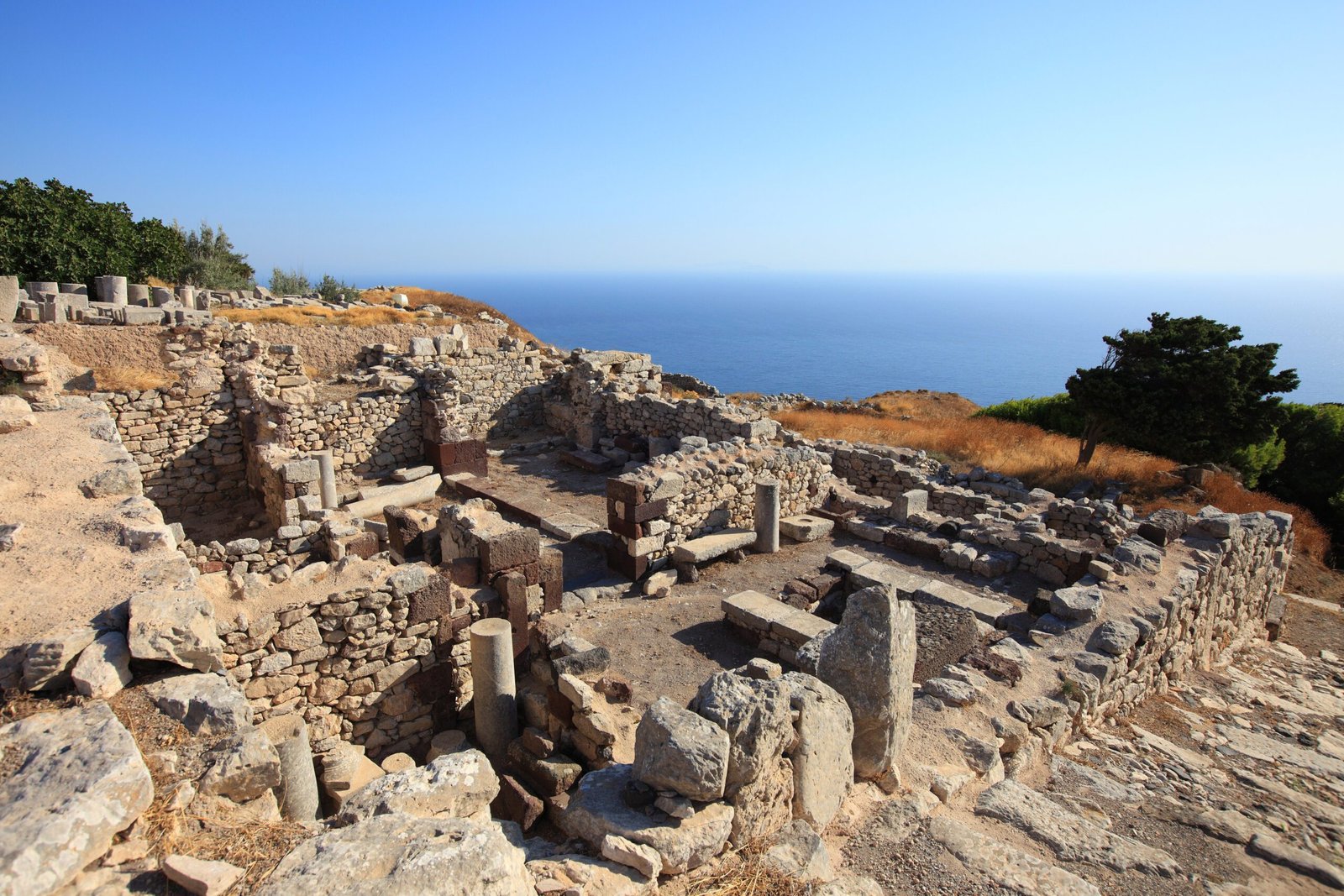Ancient Thera Santorini crowns the rocky summit of Mesa Vouno, a mountain that rises between Kamari and Perissa, about 10 km south of Fira. The site sits about 360 meters above sea level and overlooks the deep blue Aegean. Because of its height and location, it combines history, archaeology, and panoramic beauty in one unforgettable place.
Dorian settlers, led by Theras, founded the city during the 9th century BC. Over time, the settlement grew into a strong urban center that connected Santorini with other Aegean islands. During the Archaic and Hellenistic periods, citizens built temples, homes, and public squares along the ridge. Later, Romans expanded the town with baths, houses, and new sanctuaries. Eventually, early Christian residents built small churches before moving to coastal areas.
The ruins stretch along the spine of the mountain. Visitors walk through narrow stone streets that link temples, markets, and homes. The Agora once hosted trade, meetings, and public gatherings. Higher on the slope, the theater faces east toward the sea, creating a dramatic view for ancient audiences. Temples to Apollo, Artemis, and Dionysus stand along the main road, while smaller shrines appear near the cliffs.
Farther along the ridge, houses line the pathways. Builders used local stone to form walls and cisterns that collected rainwater. The city also included a gymnasium, a basilica, and several sanctuaries carved into the rock. In addition, stone inscriptions record names of citizens, soldiers, and priests. The combination of Greek, Roman, and Christian structures shows how the city evolved through changing eras.
Reaching the site requires a bit of effort. Travelers can drive up the winding road from Kamari or hike from Perissa along a steep trail. Both routes offer incredible views of the sea and coastline. The road ends near the entrance, where a small parking area sits. Because the climb is steep, visitors should wear sturdy shoes and carry water.
Ancient Thera Santorini opens daily except Tuesdays. Opening hours change by season, but mornings usually begin around 8:30. Tickets cost a few euros, and combined passes include other Santorini museums. Guides often lead small groups and explain the meaning of the ruins, making the visit more insightful.



Comment (0)